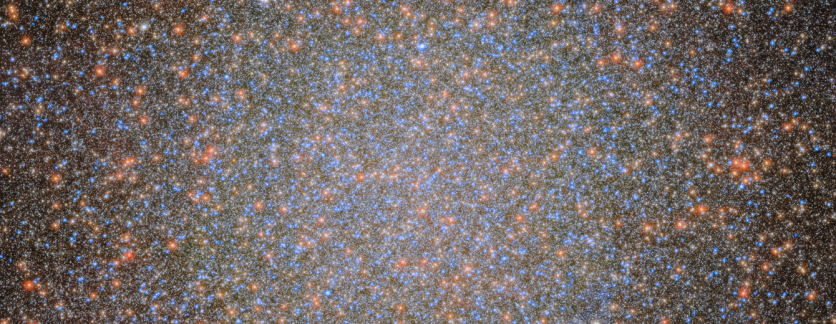Astronomers have leveraged NASA's Hubble Space Telescope to uncover evidence suggesting the presence of an elusive intermediate-mass black hole (IMBH) within the core of the globular star cluster Omega Centauri.
According to NASA, unlike the well-documented supermassive black holes found at the centers of large galaxies or the less massive black holes with under 100 solar masses, IMBHs are rare and crucial for understanding black hole evolution.

NASA on Detecting an Elusive Black Hole
The research team, comprising international astronomers, analyzed over 500 Hubble images taken over two decades. Their goal was to detect signs of an intermediate-mass black hole by tracking the movement of seven high-velocity stars in the innermost region of Omega Centauri.
These stars exhibited motion patterns indicative of a powerful gravitational force, consistent with an IMBH's influence. Omega Centauri is an enormous globular cluster home to approximately 10 million stars bound together by gravity.
It is significantly more massive than typical globular clusters, boasting a mass comparable to a small galaxy. The cluster's sheer size and the rapid movement of certain stars in it have long intrigued scientists, leading to questions about the existence and formation of IMBHs.
Maximilian Häberle of Germany's Max Planck Institute for Astronomy, who spearheaded the investigation, noted the unusual behavior of seven stars in Omega Centauri. These stars, he explained, moved so quickly that they should have been ejected from the cluster.
However, they remained, suggesting the gravitational influence of a massive object at the cluster's center. The most plausible explanation is the presence of a black hole with a mass at least 8,200 times that of the sun, according to Häberle.
The discovery of these stars and their peculiar velocities is critical in the ongoing search for IMBHs. NASA noted that previous studies had hinted at the possibility of an IMBH in Omega Centauri but were inconclusive.
Some had suggested that the central mass could be attributed to a cluster of smaller stellar-mass black holes rather than a single intermediate-mass black hole.
The absence of fast-moving stars beyond the escape velocity had cast doubt on the IMBH hypothesis. However, the recent findings provide compelling evidence that strengthens the case for an IMBH in Omega Centauri.
Omega Centauri: A Fascinating Object Visible on Earth
Omega Centauri, a celestial marvel visible to the naked eye from Earth, is a favorite among stargazers in the southern hemisphere.
Positioned just above the plane of the Milky Way, this globular cluster appears almost as large as the full moon when viewed from a dark, rural location.
This impressive sight was initially cataloged nearly 2,000 years ago by Ptolemy, who mistakenly identified it as a single star. However, it wasn't until 1677 that Edmond Halley described it as a nebula.
The true nature of Omega Centauri as a globular cluster was first recognized in the 1830s by the English astronomer John Herschel.
Related Article : NASA Unveils New Images Shedding Light on the Eating Habits of Monstrous Black Holes

ⓒ 2025 TECHTIMES.com All rights reserved. Do not reproduce without permission.




